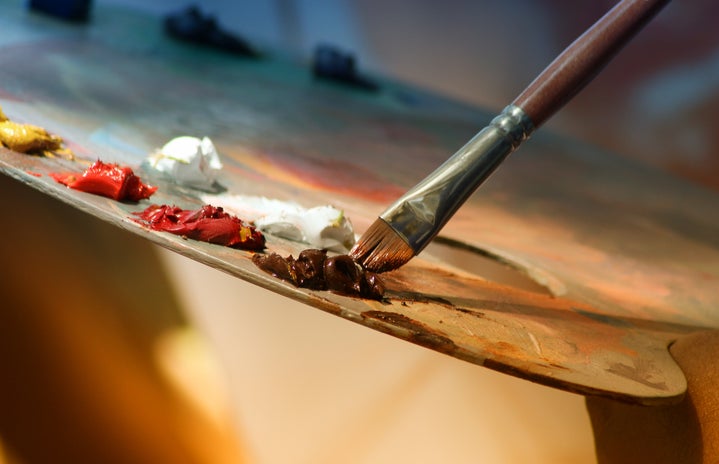(The quotes used in this article have been taken from the movie At Eternity’s Gate by Julian Schnabel)
I can make people feel what it’s like to be alive.
Vincent van Gogh‘s story is a mythical tale, and it appears as such in Julian Schnabel’s At Eternity’s Gate. Schnabel presents an affected portrait of Van Gogh as an artist who walks and searches endlessly. Carrying an easel, brushes, and paints on his back, he trudges on and on until the yellow light turns stormy. He places his battered boots, which have sustained him for months, on the red-tiled floor and paints them.
Van Gogh’s narratives often come with a strong dose of the “mad genius” branding. It’s challenging to discuss Van Gogh’s art without delving into the persona of Van Gogh the artist. Van Gogh’s spirit, the concept of who he was and what he did, paints its own story onto the canvas. It’s easy to succumb to the arc of Van Gogh as “the mad genius,” but Schnabel avoids falling into this trope. Instead, he crafts an extraordinary picture for his camera — one of a man who paints and listens, a man who never ceases to paint, seeking as if his entire existence lies in his brushes.
Schnabel pays special attention to Van Gogh’s pain and hardships, but more importantly, he focuses on the man who communicates through his easel — the space that comes alive with him. Rather than possessing an edged quality in his search for art and his true self, Schnabel’s Van Gogh is gentle. He finds joy in seeking, and his journey is through his art. His transgression is also through it. Nothing captures the essence of Van Gogh like William Dafoe’s feverish eyes and attitude. Dafoe embodies a lean ruggedness in stature, portraying a character who is serious, sensible, and persistent in his artistic pursuits.
Painted reality is its own reality.
Schnabel employs a subjective camera to portray Van Gogh as an individual. Every frame that envelopes Vincent is stunning. Van Gogh once told a priest sent to judge his sanity that perhaps God made him a painter for people who were not born yet. It’s a soft and tender hope, painting Van Gogh as a figure full of possibilities. Schnabel intricately focuses on Van Gogh’s face and body — the physicality of his immediateness, the tangible world that surrounds and shapes him.
Schnabel skilfully brings to life Vincent’s fervor to paint what he feels and feel what he paints. It’s a yearning on Schnabel’s part to see what Van Gogh once saw, to search in the world what Van Gogh himself must have sought. This is a love letter from one artist to another.
Are all painters crazy?
Only the great ones.
At one point, Vincent says that a “grain of madness is the best of art,” an observation borrowed from one of his missives. Schnabel handles Van Gogh as one would observe a fragile piece of art, of history. However, Schnabel, more so than Van Gogh at times, seeks to transcend.
Schnabel brings Vincent up in fragments, choosing the medium of film with delicate care to precisely paint the transportative quality of art anew. He seeks new light in Vincent’s paintings and wholeheartedly caters to his purpose. Schnabel presents Vincent’s words on the big screen, “I myself am quite absorbed in that immense plain with wheat fields up as far as the hills, boundless as the ocean, delicate yellow, delicate soft green, the delicate purple of a tilted and weeded piece of ground, with the regular speckle of the green of flowering potato plants, everything under a sky of delicate tones of blue, white, pink, and violet.” (A Letter from Van Gogh to his kin)
Eric Wayne, an art critic and blogger, has severely criticized Schnabel’s exaggerated reliance on Vincent’s madness. Wayne believes that Schnabel went too far in his portrayal of Vincent and missed the chance to humanize it, leaning too heavily on sensationalism. This point has been highly contentious, relying on the trust the audience places on Schnabel to present the biography of a great artist accurately. Any falsehood on his part would be a great betrayal, as the saying goes, “Exaggeration is the huckster’s crutch.” So, why would Schnabel willingly put himself into such a contrite position?
Perhaps all Schnabel wants from his audience is for them to bear witness to the unbearable pain that gives art its grand meaning. Perhaps he asks us why such beauty, such meaning must emerge from the unbearable pain of everything we see, touch, and feel.


